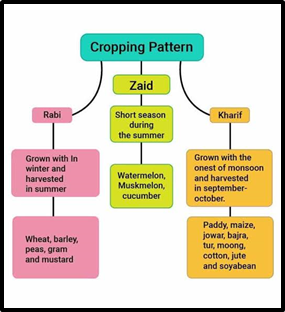DE-HYPHENATING RICE-WHEAT DYNAMICS
Why in the News?
- Diverging Trends: Rice and wheat, traditionally grouped as cereals, are facing different challenges—wheat with production issues and rice with surplus problems.
- Changing Dynamics: Wheat production is declining due to climatic vulnerabilities, while rice stocks are at an all-time high despite record exports.
Source: College Duniya
Production and Consumption Divergence:
- Wheat’s Challenges: Wheat’s production is constrained geographically and seasonally, making it more volatile due to climate change, while consumption is rising.
- Rice’s Surplus: India’s rice surplus has led to high stock levels despite exports, with rice production more stable across various states and seasons.
Policy Implications and Recommendations:
- Need for Separate Approaches: Experts suggest de-hyphenating policy strategies for rice and wheat due to their differing challenges.
- Future Outlook: For wheat, boosting yields and developing climate-resilient varieties is crucial, while rice policies should focus on managing excess stocks and lifting export restrictions.
| Key Facts :
Rice:
Wheat:
Associated Article: |




